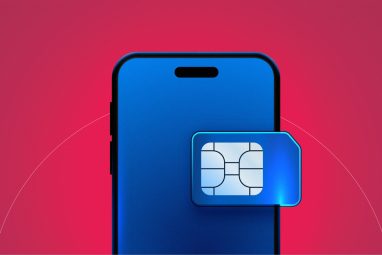BHIM Poised to Cross 100 Million Monthly Transactions
Lalitha Nataraj, managing director and CEO of NPCI BHIM Services, said new tools such as split expenses, family mode, and UPI circle are helping broaden adoption and extend digital payments beyond urban centers
Topics
News
- Nexus Closes Eighth Fund at $700 Million for Early-Stage Bets in India and US
- Amazon to Pump $12.7 Billion into India’s AI and Cloud Expansion
- Anthropic Debuts Interviewer Tool to Understand How People Really Use AI
- IPL Tops Google’s Search List for 2025 as AI Breaks Into India’s Top 10
- TeamLease Names Suparna Mitra MD & CEO in Leadership Overhaul
- Apple Loses Top UI Designer as Alan Dye Joins Meta

NPCI BHIM Services Ltd (NBSL), a wholly owned subsidiary of the National Payments Corp. of India (NPCI), was set up last year to accelerate digital payment adoption through the Bharat Interface for Money (BHIM) platform.
In an interview with MIT Sloan Management Review India, Lalitha Nataraj, managing director and CEO of NBSL, discussed how the app is scaling transaction volumes, introducing new features, and expanding reach across urban and rural India.
Launched with government backing as NPCI’s flagship UPI payments app, BHIM is poised to cross 100 million transactions this month, Nataraj said.
Since the rollout of BHIM 3.0, the platform has been growing at 15–20% month-on-month. In June alone, it processed 79.58 million transactions worth ₹12,110 crore—up 212% in volume and 46% in value compared with June last year.
Edited excerpt:
What are the latest trends in user adoption and transaction volumes?
BHIM is poised to cross the 100 million transaction mark in August. Since the launch of BHIM 3.0, the app has been registering steady growth of 15 to 20% month-on-month. To illustrate the scale, in June alone, BHIM processed 79.58 million transactions, amounting to ₹12,110 crore. That represents a 212% surge in transaction volume and a 46% rise in value compared with June 2024, a striking reflection of the momentum the platform has gathered and the level of trust it now commands among users.
How have the recent feature upgrades changed the user experience?
The March 2025 release—the third major iteration of the app—signaled an important leap forward in user experience. We retained BHIM’s ad-free, clutter-free design but added more functionality to meet the realities of daily life across Bharat. The “Split Expenses” feature now makes it effortless to settle group payments, whether for dining out or paying rent. “Family Mode” enables multi-user onboarding, shared expense tracking, and targeted bill assignments, offering families a consolidated and transparent view of household spending. The new “Spends Analytics” dashboard automatically categorizes expenses and provides actionable insights, doing away with the need for third-party budgeting apps. We also introduced the “Action Needed” assistant, which nudges users about pending bills, UPI Lite activation, and balance checks, ensuring transactions aren’t missed. And then there is “UPI Circle,” a distinctive feature that lets primary users delegate limited payment rights to up to five trusted individuals—every transaction still requiring explicit approval and PIN authentication, balancing empowerment with oversight.
Can you share insights on the profile of BHIM’s user base?
While granular demographic data such as age and gender is bank-held and cannot be disclosed, about 55% of our user base is urban. That said, BHIM today reaches across urban, semi-urban, and rural India, with support for more than 15 Indian languages and plans to expand to 22 based on population reach. The app’s ability to function seamlessly in low-connectivity areas, together with ongoing additions in regional language support, is steadily pushing digital payments into every pocket of the country.
What progress has BHIM made in expanding to tier-II, tier-III cities, and rural areas?
Absolutely. Reducing cash dependency in rural and semi-urban India is at the heart of our mission. Outreach efforts—from tie-ups with mass-market shows such as Kaun Banega Crorepati to sustained on-ground campaigns—are beginning to show results. We designed the app to function smoothly even in low-bandwidth environments and introduced lightweight versions for users with limited storage or connectivity, ensuring that inclusivity and accessibility remain core to our approach.
How does BHIM differentiate itself from private UPI apps?
All UPI-enabled apps run on the same core infrastructure and security rails. Private apps have led in transaction volumes, but BHIM differentiates itself by combining reliability, simplicity, and government-backed trust with user-focused innovation. Our recent upgrades, especially plug-in integrations that allow seamless merchant payments—already live with partners like Meesho and DMRC—strengthen BHIM’s position as both a benchmark and a pioneer in the ecosystem.
Does BHIM view itself more as a public utility or as a competitor in the market?
Our mandate is to set the benchmark for digital inclusion. As a wholly owned subsidiary of NPCI, NBSL’s role is to ensure that all stakeholders—individuals, banks, and merchants—are empowered with seamless, secure, and user-friendly payment solutions. Market share is not our first measure of success. Instead, our focus is on enabling the broadest possible participation in India’s digital economy.
What steps are being taken to address perceptions that BHIM is overshadowed by private apps?
It is true that investment drives features, but trust is the foundation we prioritize. Our users consistently highlight BHIM’s reliability and straightforward design as key differentiators. Transparency, security, and user empowerment remain the pillars of our approach—features like UPI Circle are emblematic of this philosophy.
How is BHIM supporting government-linked digital initiatives and financial inclusion efforts?
Direct Benefit Transfers were among BHIM’s earliest use cases. Today, BHIM facilitates DBT and welfare disbursements while also advancing multi-layered authentication and plug-in support as the UPI ecosystem grows. With NBSL’s dedicated focus, we intend to push deeper into financial empowerment and reduce reliance on cash, particularly for smaller, everyday transactions.
What product innovations and partnerships are planned for the next year?
Over the next 12 to 18 months, we will develop utility-focused services such as transit ticketing and mobile top-ups, alongside partnerships in credit education with credit bureaus and agencies. The emphasis will be on features that address the practical needs of Indian users, supported by nationwide evangelization to drive adoption.
How do you see BHIM evolving over the next five years?
We see BHIM evolving into a hybrid model. It will remain the flagship payments app at the heart of India’s digital inclusion drive while also selectively introducing financial services that users find valuable. The balance will be between keeping it simple and accessible and responding to the increasingly diverse needs of both urban and rural India.
What measures are in place to ensure security for new users, especially in rural areas?
We have instituted a multi-step onboarding process with device binding, transaction caps for new users, and centralized monitoring for suspicious VPAs. Each BHIM code update incorporates learnings from past incidents. While these measures may create some friction, user safety and trust remain paramount.
How does the plug-in feature work for merchants?
Our plug-in is designed to provide merchants with seamless in-app payment solutions, removing friction and reducing reliance on third-party gateways. It enables users to complete payments directly within the merchant’s native environment. Early partners such as Meesho and DMRC are already live, and we are working to expand this to more e-commerce and government-linked apps.
What optimizations have been made for users with low internet speeds or limited device storage?
We developed a lightweight version of the app to serve users with basic devices or spotty connectivity. The design prioritizes fast, reliable payments while keeping advanced features optional. Core transaction functionality remains accessible to everyone, regardless of device or bandwidth.
Is international expansion part of BHIM’s strategy?
Our immediate priority is deepening domestic reach. As UPI itself expands globally, BHIM will naturally follow Indian users overseas. But for now, our focus remains firmly on India.
How important is language support to BHIM’s inclusivity goals?
Absolutely. Support for more than 15 Indian languages, with planned expansion to 22, ensures much wider accessibility. The order of rollout is determined by user population distribution, so that the most widely spoken languages are prioritized.




